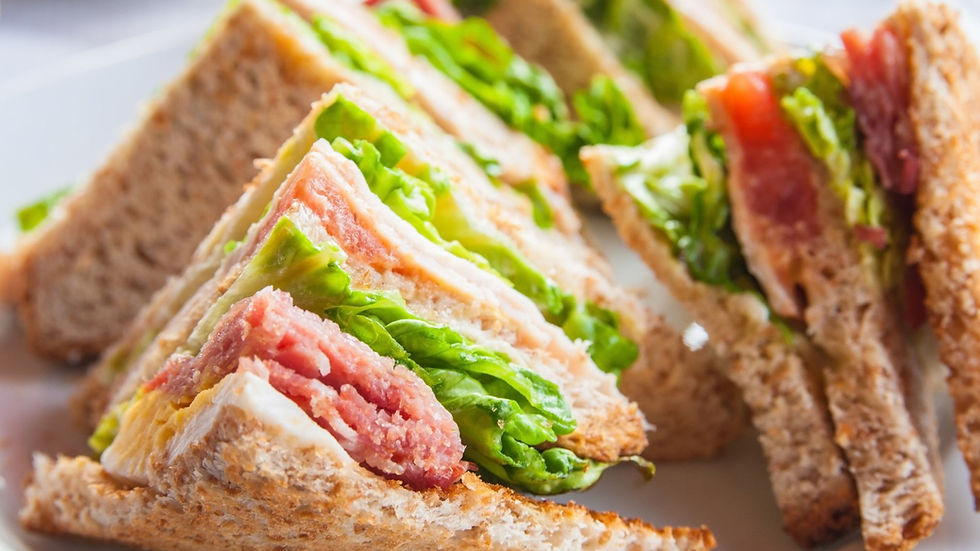🥫 Strange Condiments: A Yank’s Journey Through Britain’s Saucy Secrets (British Quirks 13/30)
- hicksondiaries
- Aug 4
- 3 min read
Updated: Aug 12
Navigating the Quirky World of British Condiments: A Taste Adventure
When I first moved to the UK, I expected cultural differences—accents, driving on the left, and, of course, the tea obsession. But I wasn’t prepared for the condiment culture shock. As an American, I thought I knew my way around sandwich spreads. Ketchup, mustard, mayonnaise—those are the holy trinity, right? Not so fast!

🇬🇧 Enter: Brown Sauce
Let’s talk about brown sauce. If you’ve never heard of it, you’re not alone. This mysterious, tangy, slightly sweet, and spicy concoction is a staple in British households. It’s often slathered on a full English breakfast or tucked into a bacon butty (that’s a bacon sandwich, for the uninitiated). Imagine a cross between steak sauce and malt vinegar, with a hint of fruitiness. It’s bold, unapologetic, and oddly addictive once you get past the initial confusion.
I remember my first encounter vividly. I asked for ketchup with my breakfast and was handed a bottle of something that looked like barbecue sauce’s moody cousin. I hesitated, but curiosity won. And you know what? It kind of grew on me!
🥪 Salad Cream: The Unsung Hero?
Then there’s salad cream. The name alone is misleading—it’s not creamy in the ranch dressing sense, nor is it particularly salad-friendly by American standards. It’s pale, gloopy, and tangy, with a vinegar-forward punch that makes mayonnaise seem bland by comparison. Brits love it in ham sandwiches, and some even drizzle it over salads (hence the name, I suppose).
I’ll admit, I was a bit skeptical at first. But after a few tries, I started to appreciate its retro charm. It’s like a time capsule from post-war Britain, and there’s something endearing about that. In all fairness, it does add a bit of something extra to your sandwich.
🥫 The Mystery of HP Sauce
Now, let’s dive into HP Sauce. This is another British classic that deserves a mention. It’s a brown sauce, but it’s different from the one we just discussed. HP Sauce has a more complex flavour profile, with a blend of spices, tamarind, and a hint of fruit. It’s often used on everything from sausages to chips (that’s fries for us Americans).
I remember the first time I tried it. I was at a pub, and my friend recommended it with my sausage sandwich. I was hesitant, but I took the plunge. It was a delightful surprise! The tangy and slightly sweet notes complemented the savoury sausage perfectly. Now, I can’t imagine a pub meal without it!
🍳 The Full English Breakfast Experience
Speaking of breakfast, let’s not forget the full English breakfast. It’s a feast on a plate! Picture this: eggs, bacon, sausages, baked beans, toast, and, of course, the all-important condiments. Brown sauce and HP Sauce are essential here. They elevate the dish to a whole new level.
I’ll never forget my first full English. I was overwhelmed by the variety of flavours and textures. The crispy bacon, the runny egg yolk, and the tangy sauce created a symphony of taste. It was a breakfast experience unlike any other!
🌍 Embracing the Condiment Culture
If you’re an American living in the UK—or just visiting—don’t shy away from these unfamiliar condiments. They might not be love at first taste, but they’re part of the cultural tapestry. And who knows? You might just find yourself reaching for brown sauce instead of ketchup one morning, wondering how you ever lived without it.
🥗 Exploring Other Unique British Condiments
Let’s not stop here! There are plenty of other British condiments worth exploring. For instance, have you heard of piccalilli? This tangy, mustard-based relish is packed with chopped vegetables and spices. It’s often served with cold meats and cheese, adding a zesty kick to your plate.
And then there’s mint sauce, a traditional accompaniment to lamb dishes. It’s sweet, tangy, and refreshing. I was surprised at how well it pairs with meat!
🍽️ A Culinary Adventure Awaits
As you navigate the world of British condiments, remember that it’s all about adventure. Each sauce tells a story and reflects the culture it comes from. So, don’t be afraid to experiment! Try new combinations and discover what works for you.
Have you tried any British condiments that surprised you? Drop your saucy stories in the comments—I’d love to hear them!
Let’s embrace the quirks of British cuisine together. After all, food is a universal language that brings us all closer. Happy tasting!







Henderson’s relish: made in Sheffield. It’s Worcester sort of, with vinegar and spices and it is sweet too. It’s for chips or meat pies or pasties. Mmm